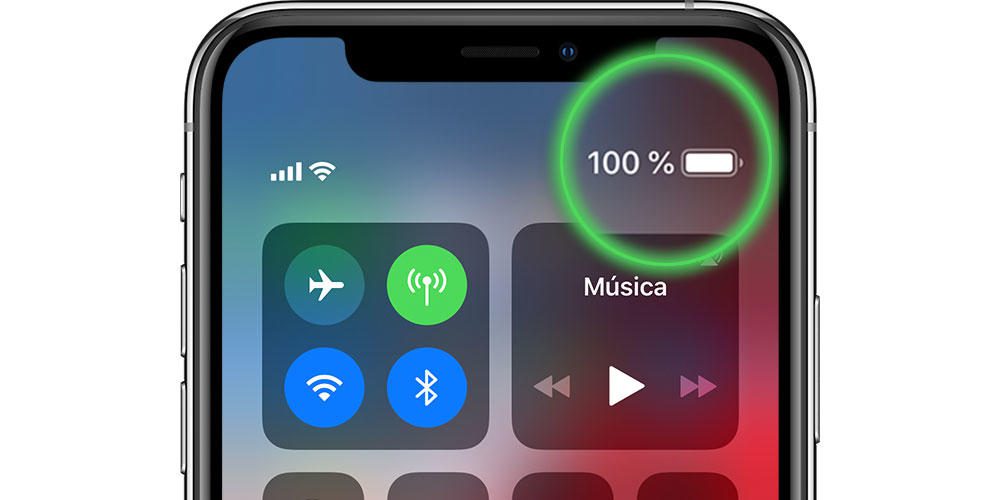The battery of our iPhoneThe car, that great ally to which we demand more and more autonomy and useful life. Very present in our daily lives, as there are many of us who, depending on what we have to do or where we want to go, we pay attention to it in order to "not to be left stranded". (unless we take a Power bank or portable external battery. However, the battery, as a hardware element, is not exempt from inconveniences or problems, so we are going to detail the main ones and their possible solutions in this iPhone battery problems guide.
iPhone Battery
The iPhone battery uses lithium-ion technology, which is an improvement over previous generations, offering faster charging, longer battery life and longer battery life, all in a lighter form factor. The battery is not only responsible for battery life, it's also responsible for the terminal performanceBecause Apple makes the handset and the operating system, the whole package is optimised to deliver maximum performance from all the integrated components, and in the end, the proper functioning of all depends on the battery. However, as time goes by, the chemical ageingand depending on the "use" The battery's capacity and performance decreases.
So, we're going to give you a few tips on how to avoid problems and improve the health of your iPhone's battery.
Problems
When you detect any kind of problem with overheating, slowness or unexpected shutdowns, it is very likely that you should start to consider replace iPhone battery:
– Unexpected shutdowns. These can occur when the battery charge is low, the chemical age of the battery is advanced or if the iPhone is in a place with cold temperatures. Apple introduced from iOS 12.1 onwards the dynamic performance managementwhich operates based on a combination of device temperature, battery charge and battery impedance. Only if required by these variables will iOS dynamically manage the maximum performance of certain system components, such as the CPU and GPU, to prevent unexpected shutdowns. On the latest iPhone models, starting with the XR, it is possible to activate the Peak throughput capacity manually when the battery has degraded significantly.
Starting with iPhone 6 and later, a Battery Health section is included where you can see notifications and alerts about the status of your battery, as well as when it needs to be replaced.

At the time of the occurrence of a unexpected shutdowniPhone will automatically activate the performance management to prevent it from happening again. From there it can be deactivated, but then you will not be able to reactivate it, it will be activated again when the iPhone suffers a new one. unexpected shutdown.

When this feature is activated, the following effects will be noticeable (although the more current the iPhone model, the less noticeable they will be):
- Longer app start-up times
- Lower frame rates when scrolling
- Backlight dimming (which can be redefined in the Control Centre)
- Volume decrease of the loudspeaker up to 3 dB
- Gradual frame rate reductions in some apps
- In the most extreme cases, the camera's flash will be deactivated (this will be indicated on its interface)
- Apps that update in the background may need to be reloaded when they are launched.
Check the Battery section of your iPhone's settings often to see if messages about the battery get worse. It is recommended that you replace the battery when its health decrease from 80%The iPhone itself will eventually notify you when it needs to be replaced.
Solutions
- Do not leave or charge your iPhone in the sun for long periods of time (especially in summer).
- You do not need to always charge the battery up to 100%.
- Do not let the battery reach 0% constantly.
- Reduce the brightness of the screen or leave it on automatic brightness.
- Activate Wi-Fi for data whenever possible (as it consumes less than 4G or 5G access).
- Use the Low consumption to extend battery life, so we get one of the best optimisations for iPhone performance.
- Settings / Battery. Activate the Optimised loading.
- Settings / Battery. Check which apps consume the most in the background and if you want you can select to use them only on Wi-Fi, Wi-Fi and mobile data or disable them.
- If you can live without real-time Mail, modify it to get the data manually.
- Settings / Display and brightness. Deactivate Lift to activate and adjusts the Automatic locking of the screen to 30 seconds.
- Settings / Siri & Search. Disable Activate on hearing "Hey Siri"..
- Settings / Privacy / Location. Deactivate Background location for the apps that consume the most or that you don't need.
- Settings / Notifications. Turn off notifications you don't need from apps that turn on the screen the most when notifying you.
- Settings / Battery / Battery health. Recalibrate battery. Only for iPhone 11, 11 Pro and 11 Pro Max.
- Always update the software to the latest version.
In the end, as Apple does with its hardware/software optimisation, the user must know which options to discriminate for maximum performance with minimum (battery) effort, in order to get the best experience from the device.
